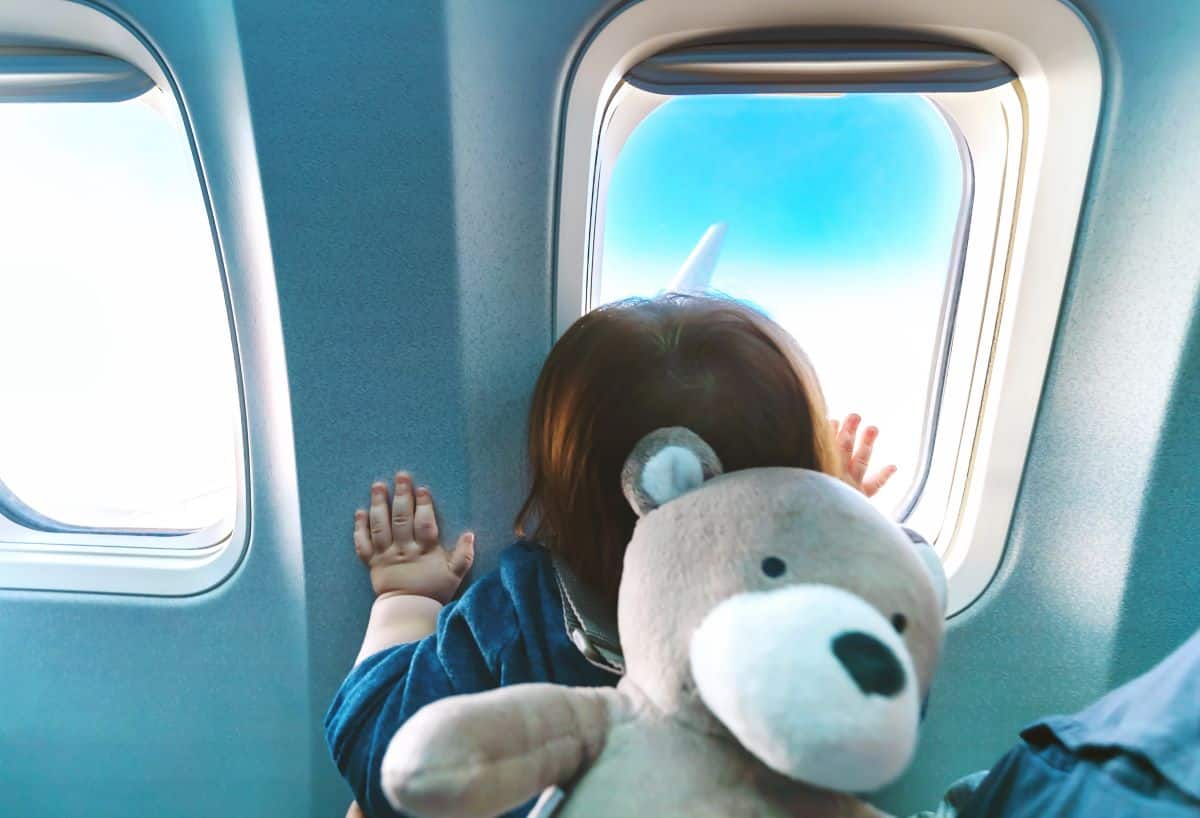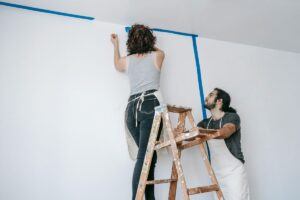Hopefully, airport security should only take a few minutes. Still, it can be one of the most stressful parts of a trip, especially when you have young children.
The best tactic is to be knowledgeable, prepared, and have a plan. If you are traveling with your partner, agree on who is responsible for what.
Divide the children and the luggage responsibilities. If you are taking the kids on your own – you definitely need a plan.
How to Navigate TSA and Airport Security
Always try to keep your calm and be polite to the TSA’s. They can make this go smoother or become a problem you just don’t need.
The TSA website is a great resource worth reading before you travel. It’s well organized, clear, and concise. It lays out the requirements and recommendations for going through airport security.
As this is a TSA website, it focuses on travel in the United States, which covers domestic and international departures.
It doesn’t cover any airports in other countries, so you may need to check any additional requirements if you travel abroad.
Airport Security
- All strollers will need to be screened. The TSA preference is through the x-ray machine, but if your stroller is too large, it will be screened by visual/physical inspection.
- This means you need to be familar with how your stroller folds down and, in some cases, disassembly. You may be asked to remove covers, wheels, or handles to allow the stroller to fit through the x-ray machine. Being well practiced will help you get through much more straightforwardly. If disassembly is too complex, just ask for the visual.
- Car seats are often big, bulky, and hard to handle. They seem to always fall over when I put them down. The best way I have found to get them through x-ray is to set the headrest all the way in, fasten the buckles and place the seat ‘face’ down on the x-ray belt.
- What you and your baby or children wear will also determine how easily you get through security. Avoid lace-up shoes, anything with lots of metal buckles or buttons, and heavy jewelry. These metal items will set off the detector alarm and mean multiple walk-throughs or even lead to a more physical pat-down search.
- If the alarm goes off for you or your children, it most likely will lead to a physical pat-down test from a TSA officer. If you are traveling with a partner, they will ask the partner to look after the child or hold the baby. If you are traveling alone, there is no circumstance where you should be separated from your baby. All additional pat-down checks can be made while you hold your baby.
- It’s a good idea to explain to your kids what will happen at the airport. This way, they know what to expect. They have probably heard you say don’t touch many times. This applies when walking through the metal detector – no touching. If they do, you must go through again, or the TSA might pull you straight to the side for a pat-down check.
- Using a non-metallic baby carrier or sling will never be asked to go through the Advanced Imaging Technology screening machine. The one where you have to stand still with your arms up. You will be able to use the standard detector or pat-down.
- Parents using a sling do not need to take the baby out of a carrier or sling. This makes traveling with a ring sling for newborns much easier and more convenient. Unless the carrier has metallic parts, like the more outdoors backpack style, it will need to go through the x-ray machine.
- If you wear your baby, you will often be subject to an additional swab test. This is where they wipe a small piece of cloth on your hands to check for dangerous substances. It only takes a few seconds and is non-invasive, so hopefully, it won’t wake a sleeping baby.
- Even if you are not carrying your baby, you have a choice not to use the AIT. This would be my choice if I was pregnant. You can ask to use an alternative scanner.
- The TSA has developed modified screening procedures for children who appear to be under the age of 12 years old. If your child seems to be older than this, they will have to follow the same procedures as the adults.
- The modified procedure for under 12’s means they can leave their shoes, light jackets, and headwear on during screening.
Important
- The details when it comes to babywearing are left a little open to interpretation on the TSA website, so I kind of understand why every TSA officer might not be consistent. This often lead to the parent being asked to remove the baby from the sling or carrier. The wording on the website is as follows.
- “Remove infants and children from strollers and car seats and carry them in arms through the walk-through metal detector.”
- “Infants may be carried in a sling/carrier (to include lap baby) through the walk-through metal detector or when being screened in a wheelchair, but may be subject to additional screening.”
- “Modified screening procedures are in place to reduce the likelihood of a pat-down.”
- I would classify myself as a frequent traveler over one hundred times in the last six years, and I have never been asked to remove my baby.
- Waking your baby can often lead to a screaming fit or meltdown. If you are worried this might happen, you can always politely ask the TSA to check with a supervisor.
- They obviously may not like this request. If that’s the case, just get on and don’t miss your flight.
- The liquid formula, breast milk, toddler drinks, and baby/toddler food section is the longest on the TSA website.
- For the items listed in the previous point, you can bring more than 3.4 oz or 100 ml in carry-on luggage, and they do not need to fit in a clear quart-sized bag.
- You must always declare it and make it clear it’s for the baby or toddler. Then place it in a separate bin to go through the x-ray scanner.
- If you fly with pumped breast milk – take a look at April’s post on how she did it for a work trip.
- Even though the items will be scanned, some additional tests will likely be carried out. Especially if the items are above 3.4oz.
- TSA officers will likely want to run a test on any liquids you are bringing through airport security that exceed 3oz.
- This is often done the same way as the hand swab I mentioned earlier. Or a test specifically for a clear bottle where the bottle or cup is placed in a special machine. This only takes seconds and can not harm the contents in any way.
- When it comes to the puree pouches that are very common today, you should not need to declare or open them as they are not classed as a liquid or gel. This might not always be consistent with every TSA officer, so if you are asked to open them, meaning they need to be refrigerated. Politely ask for the supervisor to double-check the requirements for the item.
- More and more of the larger airports are getting dedicated lines for families, which is fantastic. However, if they aren’t available or open, don’t stress how long this takes you. Those business people huffing and puffing behind you always have a choice – they can go find another line.
More Articles From Mama Say What?!
- How You Can Make Your Own Super Easy DIY Shadow Box
- Unique Ideas for Using Leftover Baby Food
- How to Make Lactation Cookies for Nursing Mamas
- Your Taste of Heaven: Salted Caramel Pretzel Bark
Featured Image Credit: Shutterstock / TierneyMJ
Tim Thomas is a renowned writer and entrepreneur specializing in finance, investing, and money matters. With his extensive knowledge and experience in the financial sector, Tim offers valuable insights into the world of personal finance, stock market trends, and investment strategies.





